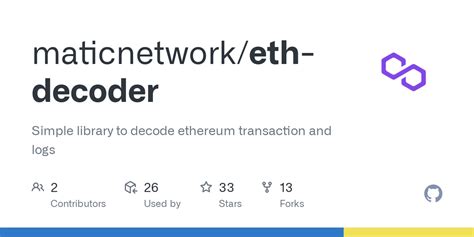decoding TX Hex Raw in Ethereum: a step-by-step guide

Ethereum is a decentralized open source blockchain platform that allows the creation and execution of intelligent contracts. One of the key features of Ethereum is its ability to archive the rough hexadecimal transaction data, known as “hexadecimal”. In this article, we will explore how to decode at the RAW TX Hex level in a programmatic way using the Ethereums' library.
Prerequisites
To follow this guide, you will need to:
- A basic understanding of the Ethereum blockchain and its concepts (intelligent contracts, transactions, etc.)
- TheEthers.js
(available on NPM or installing it locally)
- A configuration of the testnet portfolio for Ethereum
Step 1: import the library
To start, import theEthers.jsin your JavaScript file:
Javascript
Const eters = requirements (‘eters’);
`
Step 2: Create a raw transaction
Create a new raw transaction using the "Createtransazion" method from the "Ethers" library. This will return a rough hexagonal string that represents the transactions data:
Javascript
Async CreteraWTRAZZIONATION () () {
Const TX = wait eters.wallet.CreateTransation ({{
From: ‘0x …’ // Replace with your wallet address
});
Const Rawtxhex = Wait TX.RAW ();
Return rawtxhex;
}
`
Replace…with the address of the royal portfolio. This will generate a new transaction and store raw data in theTX.RAW ().
Step 3: Decoding RAW TX EXPERAGE
To decode the hexagonal ride of raw transaction, you can use a bookcase asEthers-Hex. Here is a snippet of example:
Javascript
Asincrica Function DecodeRawtxhex (Rawtxhex) {
Const Decoded = wait eters.hextypes.decodehex (Rawtxhex);
return decoded;
}
`
This will return an "DeCodedransation" object, which contains the raw transaction data in hexadecimal format.
Example of use of the case
Here is an example of how you can use this fragment of code to recover and decode a raw transaction:
Javascript
Const Rawtx = wait eters.wallet.CreateTransation ({{
From: ‘0x …’ // Replace with your wallet address
});
Const Rawtxhex = Wait Rawtx.Raw ();
Console.log (Rawtxhex); // Output: Esadecimale rough transaction string
Const Decodedrawtx = waiting decoderawtxhex (rawtxhex);
Console.log (decodedrawtx.tobuffer ()); // Output: Rough transaction data in bytes
`
In this example, we create a new RAW transaction usingETERS.WALLET.CREATETRANSATION ‘, recovers its raw data using the TX.RAW (), therefore decoding in an object' decodtransotion 'usingetherrs.hextypes.decodehex.
Tips and variants
- To codify the hexagonal ride of raw transaction in a binary format, you can use the
Ethers-Hexencoder 'library.
- If it is necessary to archive or transmit raw transactions data in a more structured format (e.g. Json or CSV), it is possible to take into consideration the use of bookstores such asJson-RPC ‘O
CSV-Parser'.
Following this guide and exploring these steps, you should now be able to schedule the RAW TX bookcase using theEthers.js`.
Leave a Reply